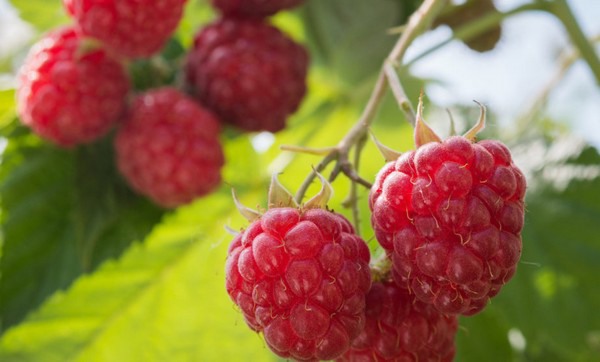In this article, BVB Substrates describes the different stages of growing raspberries, explaining more about challenges and opportunities with these growing methods.
To create the young raspberry plants for production, roots are grown in containers. Once a vast root system has developed they are cut into smaller parts. These roots are then put on beds and covered with substrates.
After a while, new shoots will develop from the roots and the young plants are born. The next step is to take the young plants from the beds and put them into separate containers.
Tipping long cane raspberries – young plants
We usually advise placing the young plants in a substrate composed of coir and fine European block peat.

There are two main points of attention for the production of these young plants.
Firstly, you need to make sure that the irrigation intensity is appropriate. When the tips are developing roots they need intensive fogging to be able to take up enough water to grow. However, too much fogging can lead to issues like botrytis. Secondly, you need to keep in mind that the young plants need a proper feed schedule as well in order to grow and develop.
Transplanting for growth
Once the roots have developed and there’s no frost risk, the plants are transplanted into larger containers. It is most common to put two young plants in one container to optimise fruit production and the use of space and substrate.
For more susceptible varieties, we recommend growers to use substrates with a large chemical buffer and a higher air content. This way, the chemical composition will be stable and roots get enough air and space to develop.
Storing grown plants
The raspberry plants are usually put outside with a supporting system to develop and reach a height of approximately 180cm. In autumn, growers bring down their feed schedule and plants start losing leaves. Eventually, all leaves should be removed mechanically or manually before putting the plants into storage.
It’s crucial to make sure that the plants are pre-cooled before they are wrapped in plastic and put in cold storage. If the plant's temperature is still too high when you store them away, they will remain active and create their own warmth. In addition, it is also highly important to make sure your plastic cover has holes in it, as a totally closed environment may lead to botrytis or gasses can build up.
The ideal temperate for storage is -0,5 degrees Centigrade. If the temperature is above 0°C, plants will remain active and already start to grow. This means you will lose a lot of potential growth/plant power later on. The same goes for storing the plants in too low temperatures for too long.
Fruit production
Once the plants can come out of cold storage, they are transplanted in larger containers. We usually recommend using substrates that are composed of coir, European block peat, and perlite to offer optimal security and stability to the plants. Don’t hesitate to contact our team to learn more about the substrates available for your plants.
Fertigation schedule
Make sure to take a careful look at your fertigation schedule. These plants need enormous amounts of nitrogen at the start of this growing phase. The composition of your fertigation liquid and your strategy should always depend on your freshwater quality and composition.
Growing structure
The best practice is to create rows of 3 pots per meter (each pot containing two plants), with ropes supporting the plants to prevent kinking of the laterals. Raspberries should always be produced undercover to protect the fruits from wind and rain, as well as animals.
For more information: 
BVB Substrates
www.bvb-substrates.nl
info@bvb-substrates.nl
